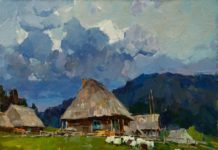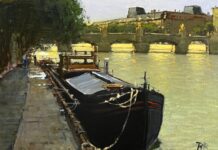Poetry and painting together? In a sense, this is old news — as in, going back to Plato’s era. So why does it seem so fresh in two recent exhibitions?
The literary term for writing that helps explain or describe visual art is ekphrasis, and Plato defined it in his work Republic. It has often been used as a form of competition, with poets vying to create the most compelling interpretation of a painting or sculpture. In Palm Beach, Florida, this spirit continues at the Cornell Museum of Art, thanks to the 11th Annual Palm Beach Poetry Festival. That six-day event included a Plein Air Poetry Contest, in which contestants are invited to pen up to 30 lines of poetry inspired by the exhibition at the museum titled “En Plein Air.” The contest is open until March 1, with winners announced on April 1. Poet Stephen Gibson serves as the judge.
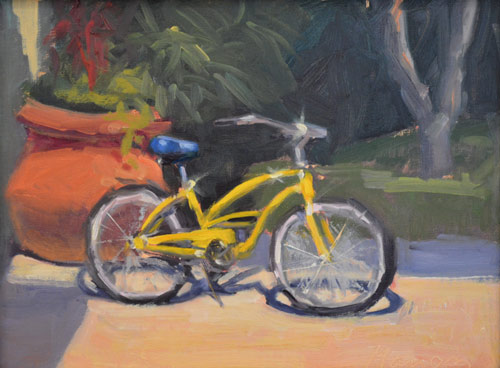
“All Pumped Up,” by Manon Sanders. Best of Show at the “En Plein Air” show at the Cornell Museum of Art in Delray Beach, Florida
“We held this contest this year because we went over to the exhibit and saw that there are so many local subjects depicted in the show — we really felt that our poets would be inspired and want to participate,” says Susan R. Williamson, the director of the Palm Beach Poetry Festival. “Our contest judge, Stephen Gibson, is an expert on ekphrastic poetry. This kind of contest is done in many different places all over the country; I first encountered it in Charlottesville, Virginia. We’ve done a lot of different things where poetry works together with other art forms. In this case, we’re asking poets to be inspired by the visual. It can be a literal expression of the painting, something imagined after seeing the painting, or any kind of metaphorical form that occurs from their seeing the painting.”
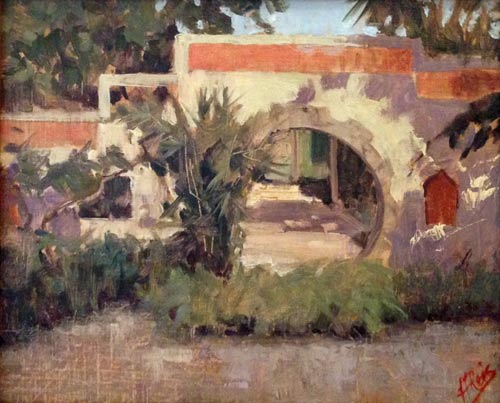
“Arts Roundabout,” by Hope Reis. First Place
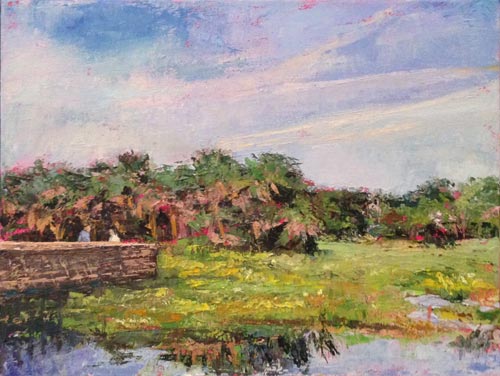
“Sunny Day at Green Cay,” by Dale Stryker. Second Place
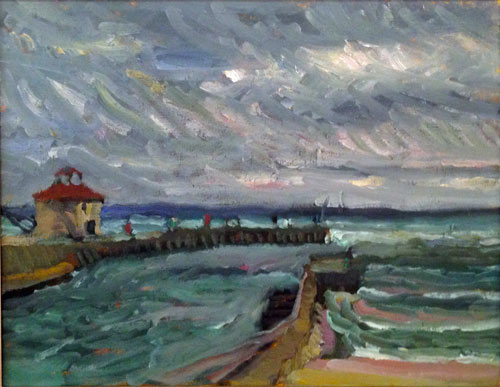
“Rainy Day at the Boynton Inlet,” by Brennan King. Third Place
The contestants use as their inspiration the award winners at the “En Plein Air” exhibition, on view at the Cornell Museum of Art, in Delray Beach, Florida, through March 8. The winners are: Manon Sander, Best of Show for “All Pumped Up”; Hope Reis, First Place for “Arts Roundabouts”; Dale Stryker, Second Place for “Sunny Day at Green Cay”; and Brennan King, Third Place for “Rainy Day at Boynton Inlet.” Sheila Wolff and Ralph Papa both won Judges Recognition awards, and Ruth Weiss and Chris Kling both won Honorable Mention.
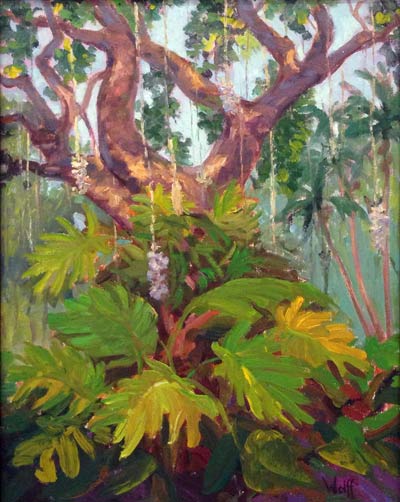
“Sausage Tree,” by Sheila Wolff. Judges Recognition
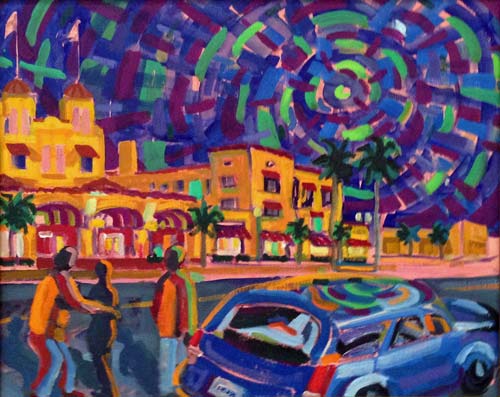
“Evening by the Colony Hotel,” by Ralph Papa. Judges Recognition
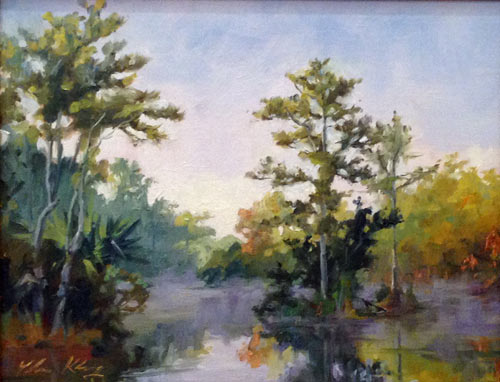
“Misty Waters at Riverbend Park,” by Chris Kling. Honorable Mention
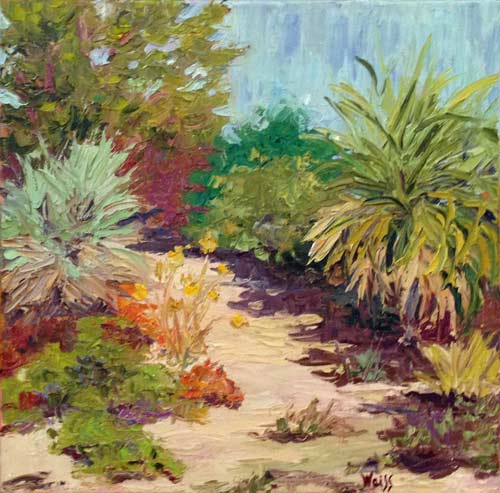
“Spring Path at Jupiter,” by Ruth Weiss. Honorable Mention
“You never know what’s going to come about when poets are inspired by what’s around them,” says Williamson. “The inspiration might come from a painting on the wall, or a bird in a palm tree. The subjects of poets are as varied as the world. It’s up to them to decide how they will express their experience of the paintings. Usually there’s a terrific exchange between poet and painter. Maybe next year we will see if painters would be inspired by lines of the poets coming to the festival.”
In California, E.E. Jacks is busy with multiple shows that incorporate both visual art and poetry. The Orange County artist has two exhibitions currently open at the Magoski Art Colony in Fullerton, California, and both feature words and images. This combination is not unusual for Jacks, who seems regularly moved to write a poem to further explore an experience. Jacks seems to find it the most natural thing in the world.
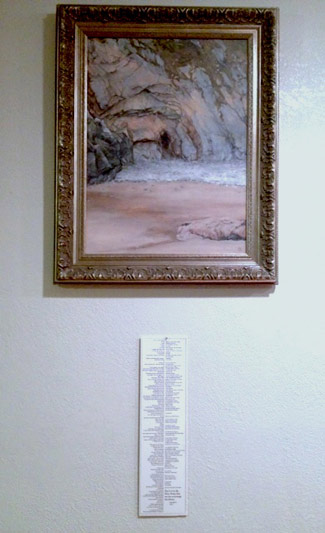
Poems were placed under landscapes for this show featuring Jacks.
“I think the plein air artist is by nature a poet,” says Jacks. “What I mean is that when the painter transcribes the vision of the place he or she sees into paint placed onto a canvas, then that place or figure or whatever becomes entirely the creation of the thinker. The thinker is the poet, the imagineer, and the creator. It is all very circular to me. Some plein air artists literally write down their poems and others simply paint them.
“Personally, as an artist, I think it is crucial to think outside of the tools sitting before you. The painter creates a vision from his or her own mind’s eye via the environment, and that in turn can promote a new kind of expression in the form of poetry. Or it can go the other way around, the poem can come first, and then the painting.”
Jacks goes on, “I believe the plein air painter in particular and the poet dwell within each other. What is fascinating to me is that the painter can actually transcend language by creating a piece of parallel human experience visually, and the poet can create a visual piece verbally. Hence the beautiful crucial cyclical nature of the poet and the painter conjoin — at least in my mind.”



